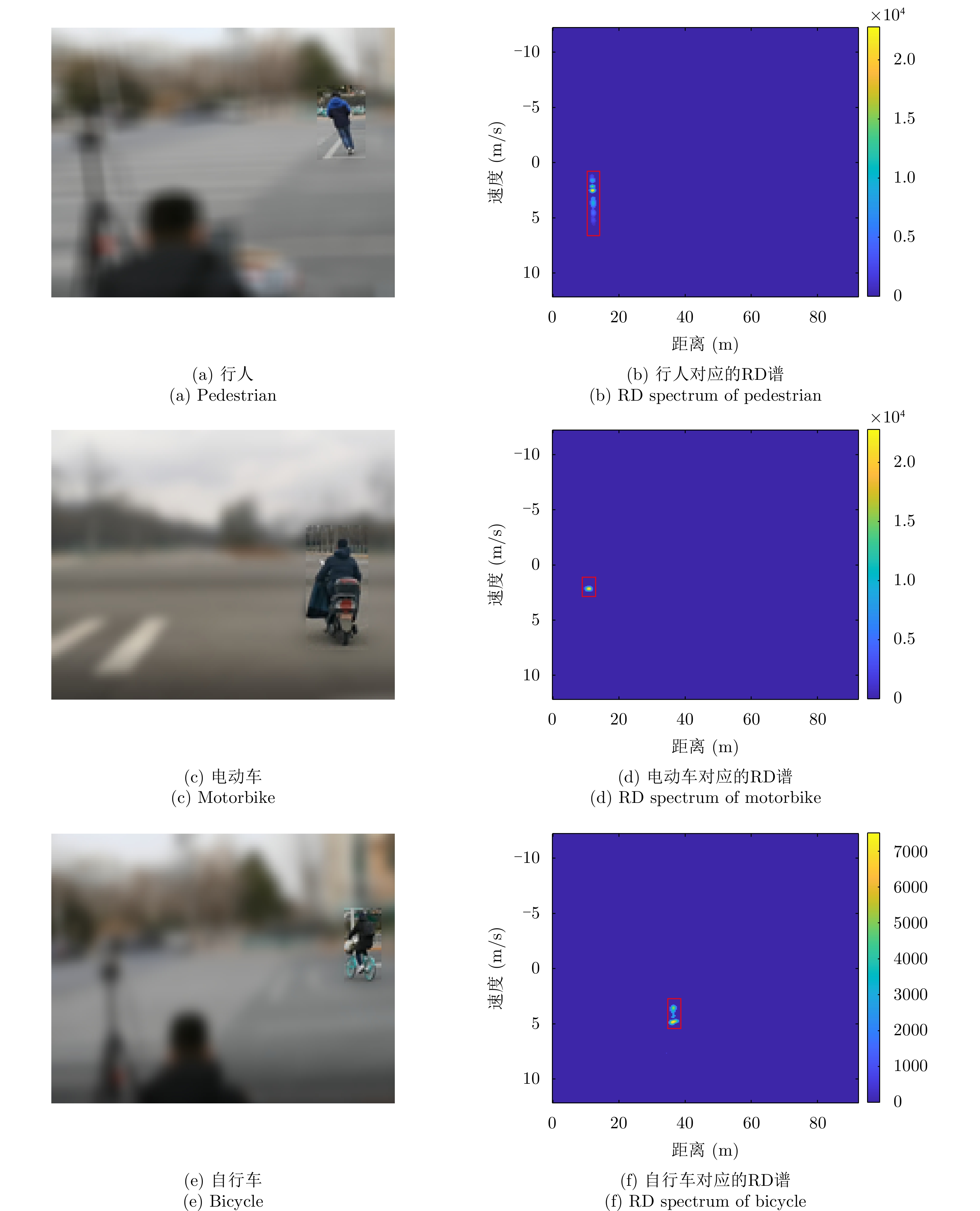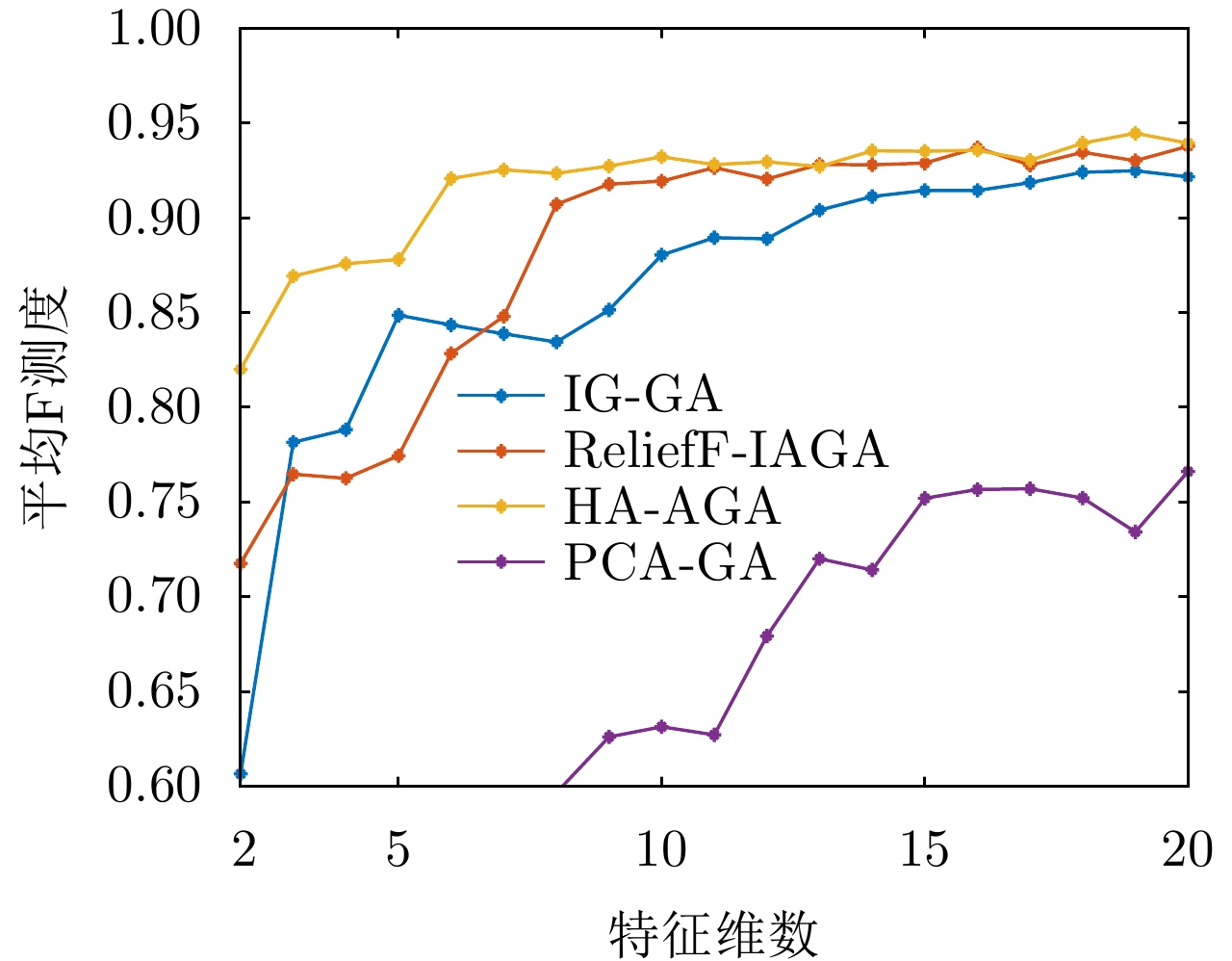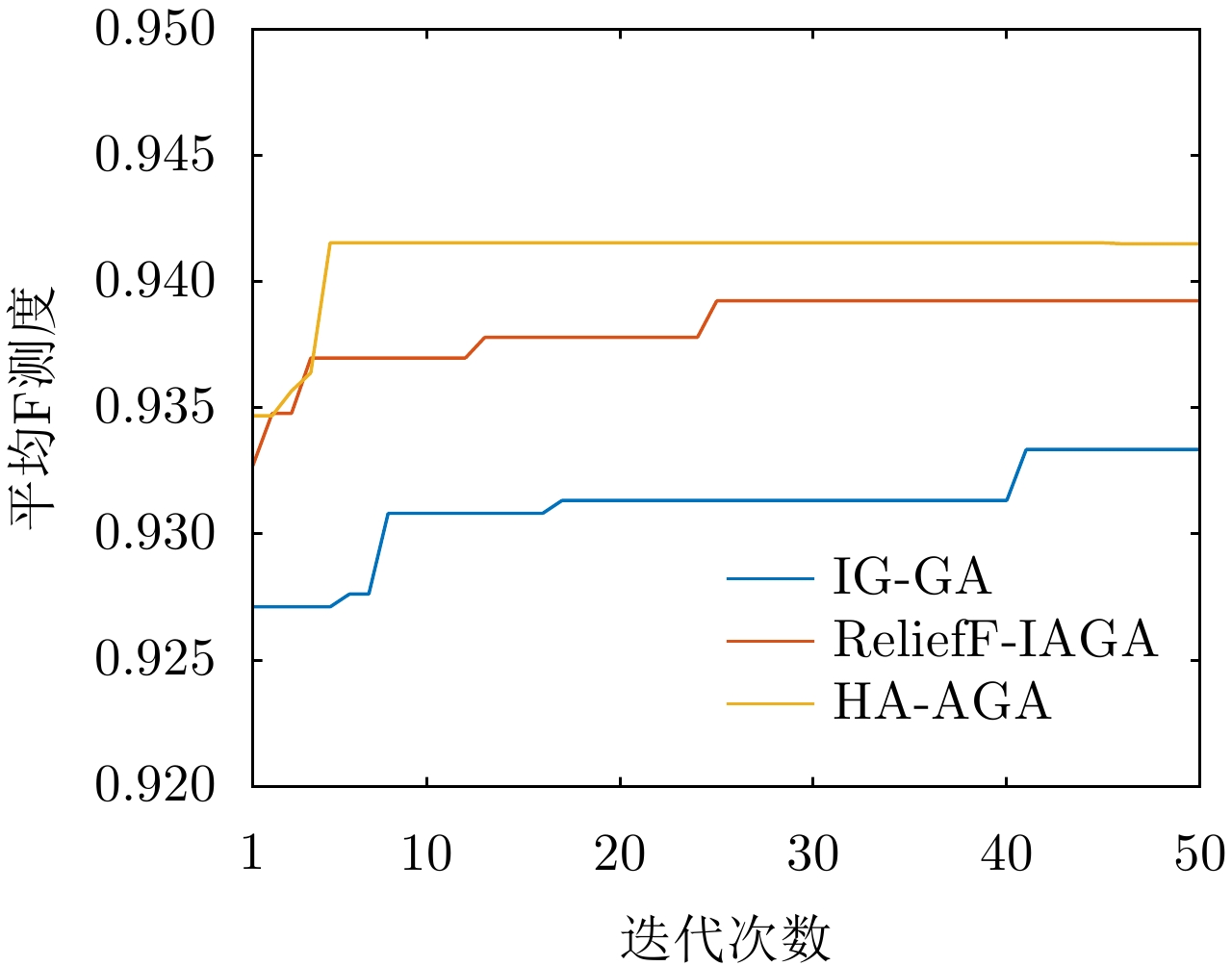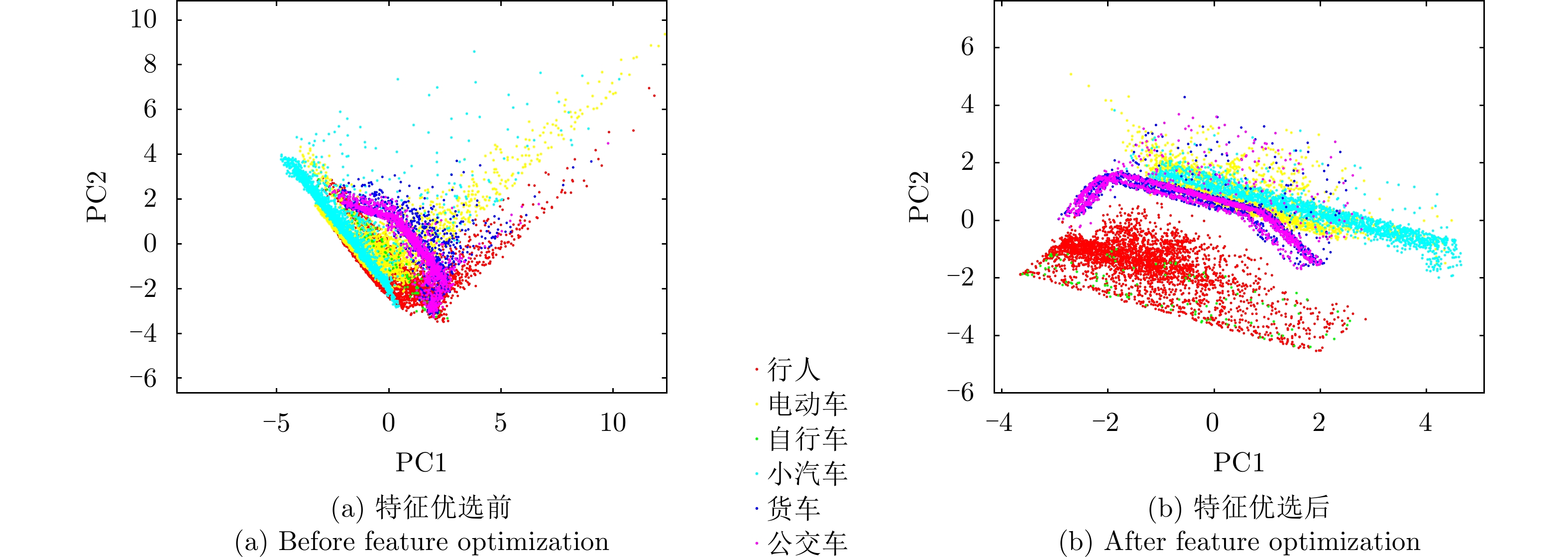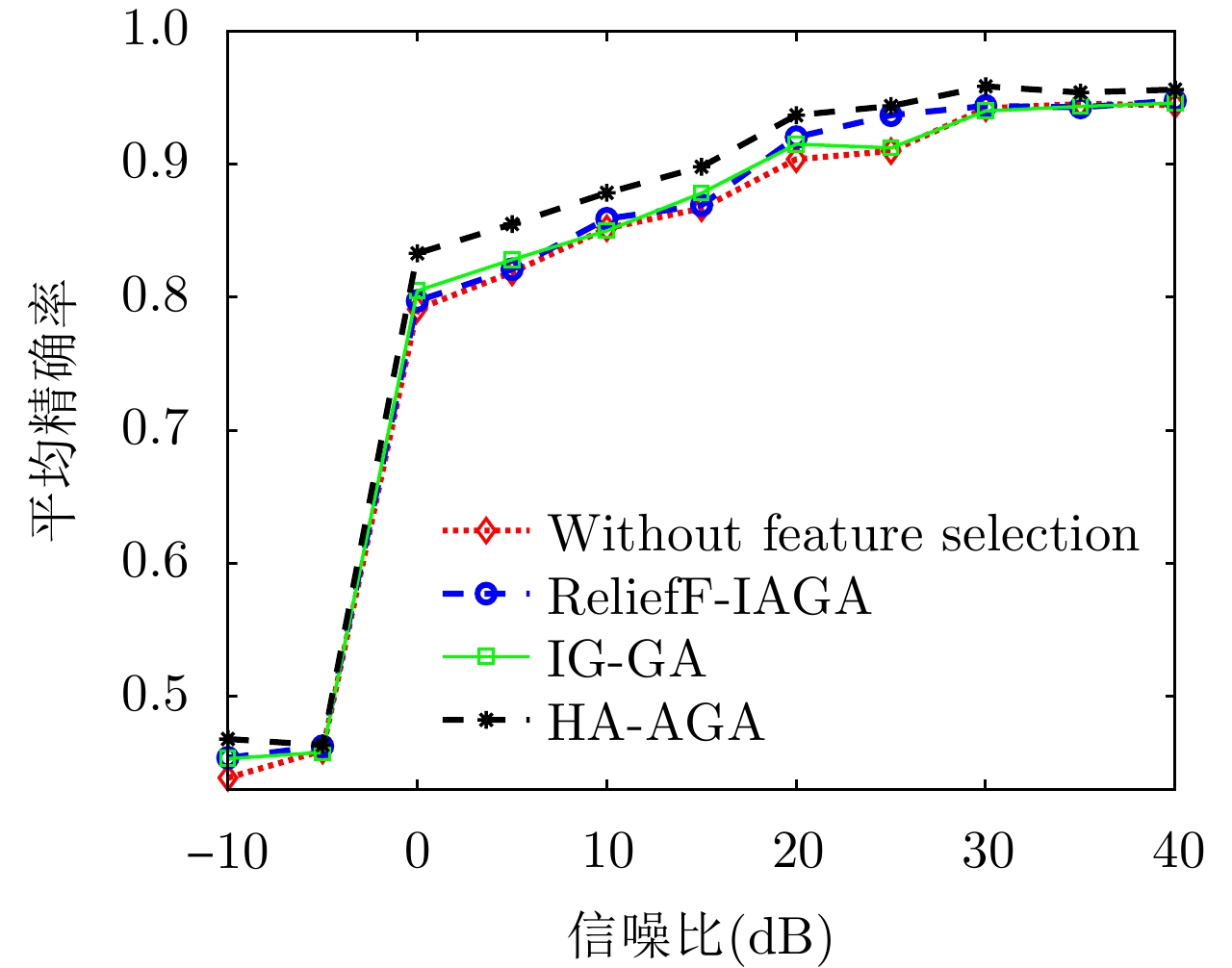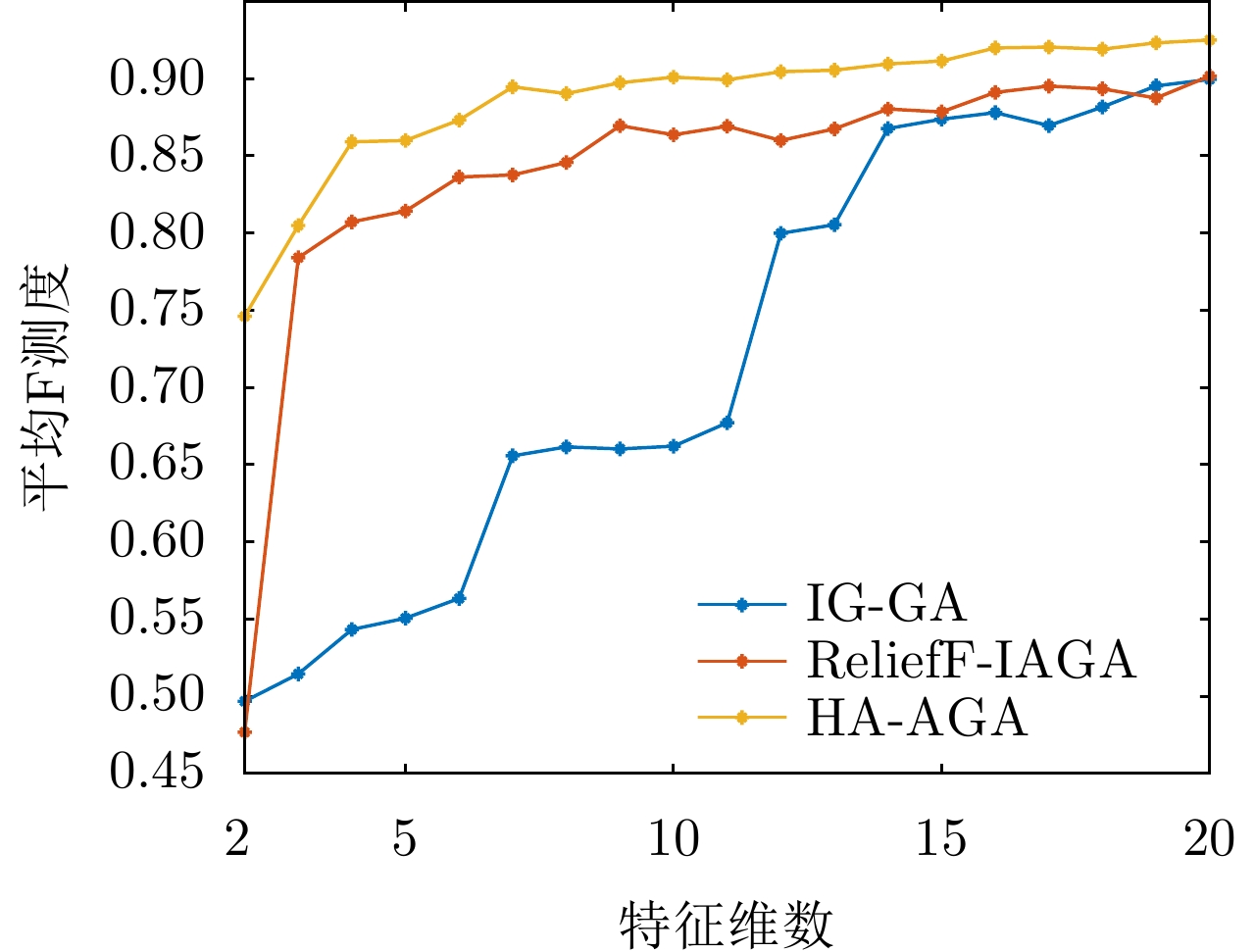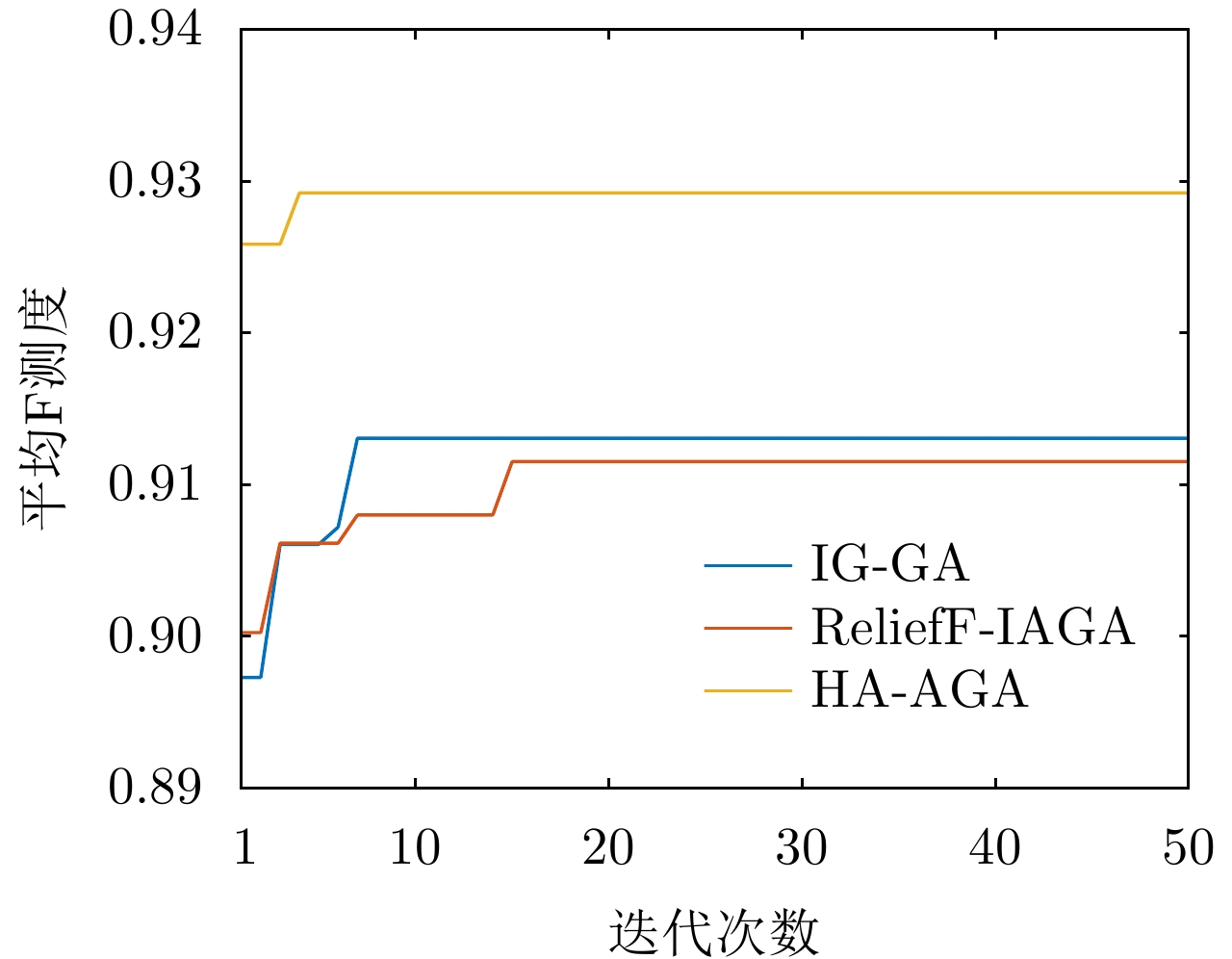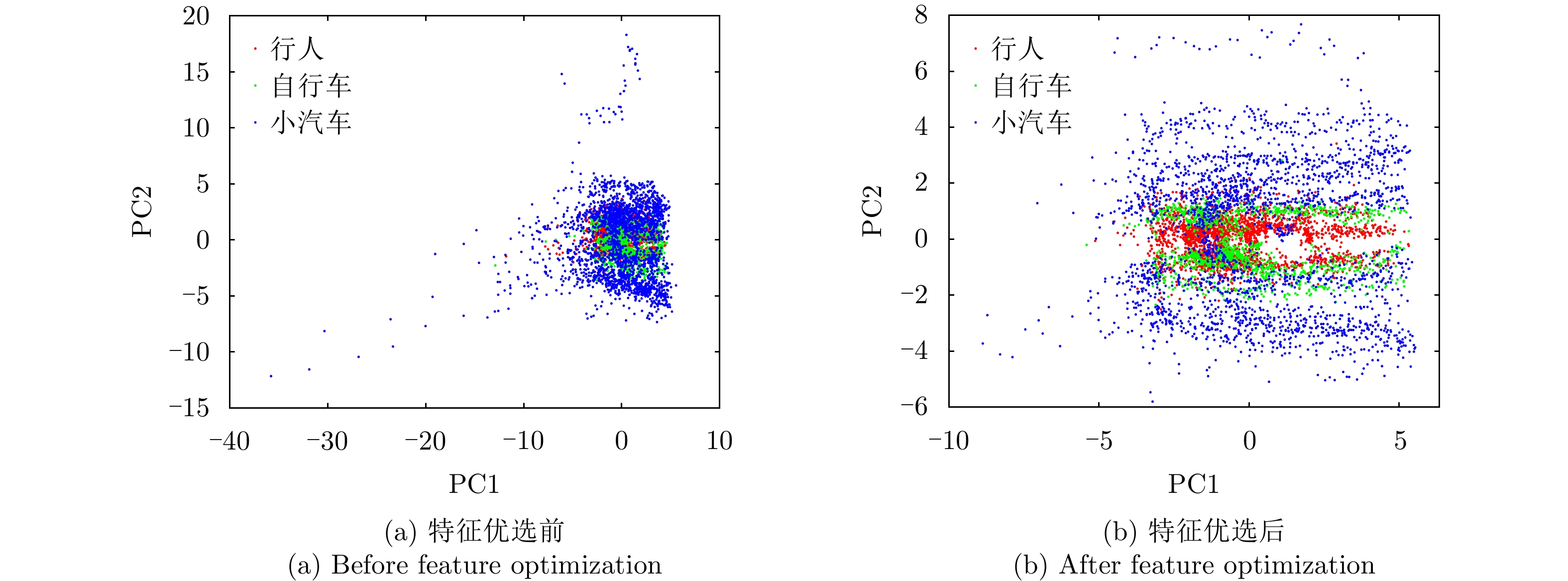| [1] |
PATOLE S M, TORLAK M, WANG Dan, et al. Automotive radars: A review of signal processing techniques[J]. IEEE Signal Processing Magazine, 2017, 34(2): 22–35. doi: 10.1109/MSP.2016.2628914 |
| [2] |
ZHOU Gang and WU Jie. Parameters optimized design of automobile anti-collision millimeter wave radar system[J]. Telecommunication Engineering, 2011, 51(7): 77–80. doi: 10.3969/j.issn.1001-893x.2011.07.016 |
| [3] |
元志安, 周笑宇, 刘心溥, 等. 基于RDSNet的毫米波雷达人体跌倒检测方法[J]. 雷达学报, 2021, 10(4): 656–664. doi: 10.12000/JR21015YUAN Zhian, ZHOU Xiaoyu, LIU Xinpu, et al. Human fall detection method using millimeter-wave radar based on RDSNet[J]. Journal of Radars, 2021, 10(4): 656–664. doi: 10.12000/JR21015 |
| [4] |
ZHAO Yan, ZHAO Lingjun, XIONG Boli, et al. Attention receptive pyramid network for ship detection in SAR images[J]. IEEE Journal of Selected Topics in Applied Earth Observations and Remote Sensing, 2020, 13: 2738–2756. doi: 10.1109/JSTARS.2020.2997081 |
| [5] |
MIAO Tian, ZENG Hongcheng, YANG Wei, et al. An improved lightweight RetinaNet for ship detection in SAR images[J]. IEEE Journal of Selected Topics in Applied Earth Observations and Remote Sensing, 2022, 15: 4667–4679. doi: 10.1109/JSTARS.2022.3180159 |
| [6] |
WANG Chenxi, CHEN Zhichao, CHEN Xin, et al. Detection of MMW radar target based on Doppler characteristics and deep learning[C]. IEEE International Conference on Artificial Intelligence and Industrial Design, Guangzhou, China, 2021: 266–271.
|
| [7] |
ZHANG Tianwen, ZHANG Xiaoling, KE Xiao, et al. HOG-ShipCLSNet: A novel deep learning network with HOG feature fusion for SAR ship classification[J]. IEEE Transactions on Geoscience and Remote Sensing, 2022, 60: 5210322. doi: 10.1109/TGRS.2021.3082759 |
| [8] |
SOROWKA P and ROHLING H. Pedestrian classification with 24 GHz chirp sequence radar[C]. 2015 16th International Radar Symposium, Munich, Germany, 2015: 167–173.
|
| [9] |
余月琴. 车载毫米波雷达行人识别算法研究[D]. [硕士论文], 电子科技大学, 2020: 11–15.
YU Yueqin. Research on pedestrian recognition algorithm of automobile millimeter wave radar[D]. [Master dissertation], University of Electronic Science and Technology of China, 2020: 11–15.
|
| [10] |
HEUEL S and ROHLING H. Pedestrian classification in automotive radar systems[C]. 2012 13th International Radar Symposium, Warsaw, Poland, 2012: 39–44.
|
| [11] |
LANDGREBE D A. Signal Theory Methods in Multispectral Remote Sensing[M]. Hoboken, USA: Wiley, 2003.
|
| [12] |
EL AKADI A, AMINE A, EL OUARDIGHI A E, et al. A two-stage gene selection scheme utilizing MRMR filter and GA wrapper[J]. Knowledge and Information Systems, 2011, 26(3): 487–500. doi: 10.1007/s10115-010-0288-x |
| [13] |
TEKELI B, GURBUZ S Z, and YUKSEL M. Information-theoretic feature selection for human Micro-Doppler signature classification[J]. IEEE Transactions on Geoscience and Remote Sensing, 2016, 54(5): 2749–2762. doi: 10.1109/TGRS.2015.2505409 |
| [14] |
JOLLIFFE I T. Principal Component Analysis[M]. 2nd ed. New York, USA: Springer, 2002: 1–9.
|
| [15] |
WANG Zigeng, XIAO Xia, and RAJASEKARAN S. Novel and efficient randomized algorithms for feature selection[J]. Big Data Mining and Analytics, 2020, 3(3): 208–224. doi: 10.26599/BDMA.2020.9020005 |
| [16] |
GÜRBÜZ S Z, TEKELI B, KARABACAK C, et al. Feature selection for classification of human Micro-Doppler[C]. IEEE International Conference on Microwaves, Communications, Antennas and Electronic Systems, Tel Aviv, Israel, 2013: 1–5.
|
| [17] |
WU Yanwei, JIANG Mian, PEI Xiaoshuai, et al. Feature selection and decision fusion methods in target recognition[C]. IET International Radar Conference, Chongqing, China, 2021: 687–690.
|
| [18] |
XIAO Peng, WANG Zigeng, and RAJASEKARAN S. Novel speedup techniques for parallel singular value decomposition[C]. 2018 IEEE 20th International Conference on High Performance Computing and Communications; IEEE 16th International Conference on Smart City; IEEE 4th International Conference on Data Science and Systems, Exeter, UK, 2018: 188–195.
|
| [19] |
CHANDRASHEKAR G and SAHIN F. A survey on feature selection methods[J]. Computers & Electrical Engineering, 2014, 40(1): 16–28. doi: 10.1016/j.compeleceng.2013.11.024 |
| [20] |
WANG Yunyan, ZHUO Tong, ZHANG Yu, et al. Hierarchical polarimetric SAR image classification based on feature selection and Genetic algorithm[C]. 2014 12th International Conference on Signal Processing (ICSP), Hangzhou, China, 2014: 764–768.
|
| [21] |
BHANU B and LIN Yingqiang. Genetic algorithm based feature selection for target detection in SAR images[J]. Image and Vision Computing, 2003, 21(7): 591–608. doi: 10.1016/S0262-8856(03)00057-X |
| [22] |
SENTHILNATH J, OMKAR S N, MANI V, et al. Multi-sensor satellite remote sensing images for flood assessment using swarm intelligence[C]. 2015 International Conference on Cognitive Computing and Information Processing, Noida, India, 2015: 1–5.
|
| [23] |
LIANG Kui, DAI Wei, and DU Rui. A feature selection method based on improved genetic algorithm[C]. 2020 Global Reliability and Prognostics and Health Management (PHM-Shanghai), Shanghai, China, 2020: 1–5.
|
| [24] |
LI Yinghao, SHI Kai, QIAO Fuqiang, et al. A feature subset selection method based on the combination of PCA and improved GA[C]. 2020 2nd International Conference on Machine Learning, Big Data and Business Intelligence (MLBDBI), Taiyuan, China, 2020: 191–194.
|
| [25] |
YANG B S, HAN Tian, and YIN Zhongjun. Fault diagnosis system of induction motors using feature extraction, feature selection and classification algorithm[J]. JSME International Journal Series C: Mechanical Systems, Machine Elements and Manufacturing, 2006, 49(3): 734–741. doi: 10.1299/jsmec.49.734 |
| [26] |
LIU Ming, DING Xiangqian, YU Shusong, et al. Research on feature selection in near-infrared spectroscopy classification based on improved adaptive genetic algorithm combined with ReliefF[C]. 2017 9th International Conference on Intelligent Human-Machine Systems and Cybernetics (IHMSC), Hangzhou, China, 2017: 403–406.
|
| [27] |
YANG Jianyong and YAN Ruqiang. A multidimensional feature extraction and selection method for ECG arrhythmias classification[J]. IEEE Sensors Journal, 2021, 21(13): 14180–14190. doi: 10.1109/JSEN.2020.3047962 |
| [28] |
THEJASWEE M, SRILAKSHMI P, KARUNA G, et al. Hybrid IG and GA based feature selection approach for text categorization[C]. 2020 4th International Conference on Electronics, Communication and Aerospace Technology (ICECA), Coimbatore, India, 2020, 1606–1613.
|
| [29] |
DELON J, DESOLNEUX A, LISANI J L, et al. A nonparametric approach for histogram segmentation[J]. IEEE Transactions on Image Processing, 2007, 16(1): 253–261. doi: 10.1109/TIP.2006.884951 |
| [30] |
OUAKNINE A, NEWSON A, REBUT J, et al. CARRADA dataset: Camera and automotive Radar with range- angle- Doppler annotations[C]. 2020 25th International Conference on Pattern Recognition (ICPR), Milan, Italy, 2021: 5068–5075.
|
| [31] |
WHITLEY D. A genetic algorithm tutorial[J]. Statistics and Computing, 1994, 4(2): 65–85. doi: 10.1007/BF00175354 |
| [32] |
SAITO T and REHMSMEIER M. The precision-recall plot is more informative than the ROC plot when evaluating binary classifiers on imbalanced datasets[J]. PLoS One, 2015, 10(3): e0118432. doi: 10.1371/journal.pone.0118432 |




 Submit Manuscript
Submit Manuscript Peer Review
Peer Review Editor Work
Editor Work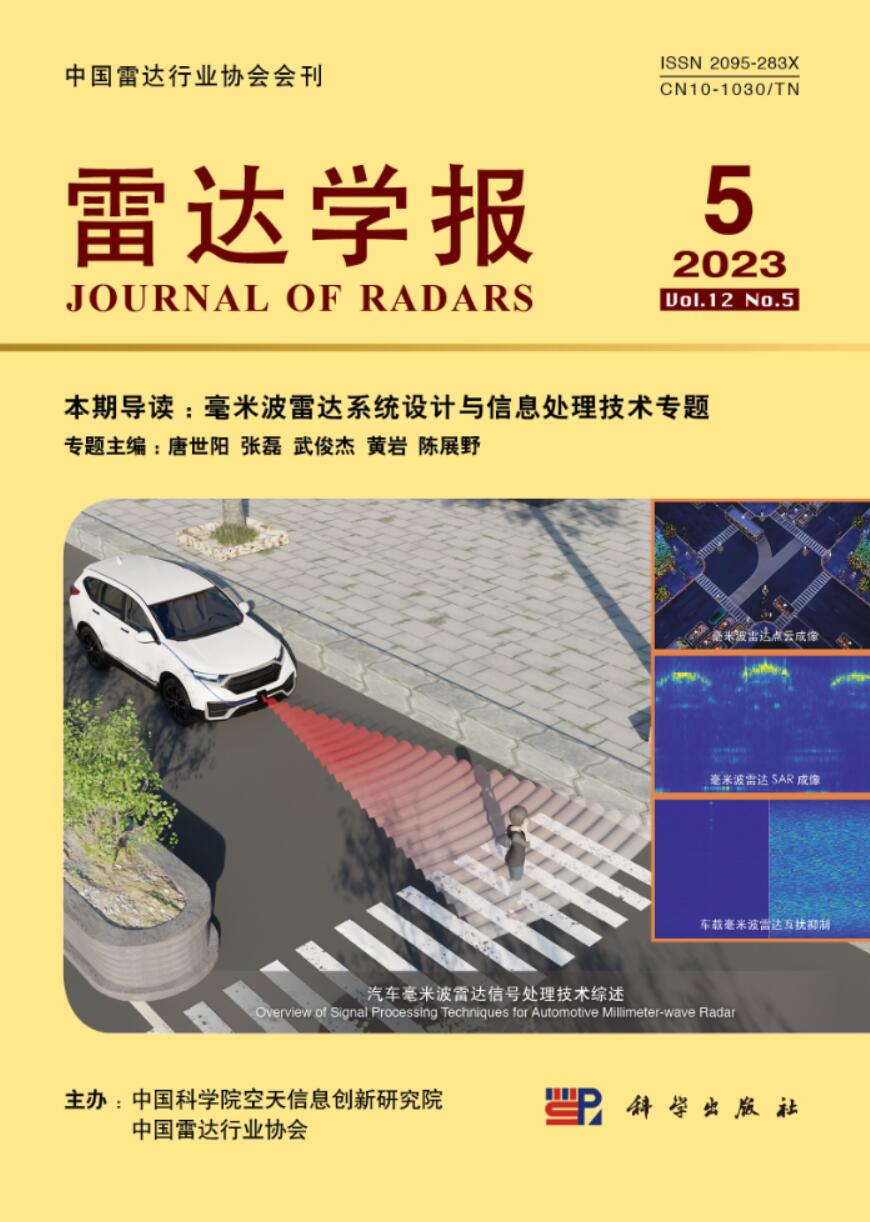





 DownLoad:
DownLoad:


